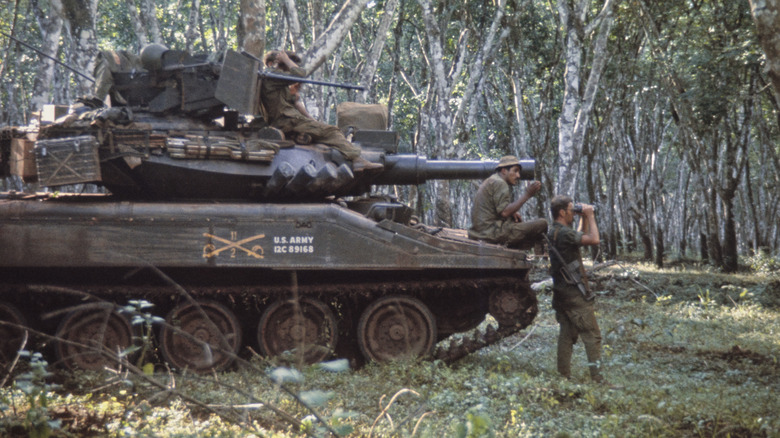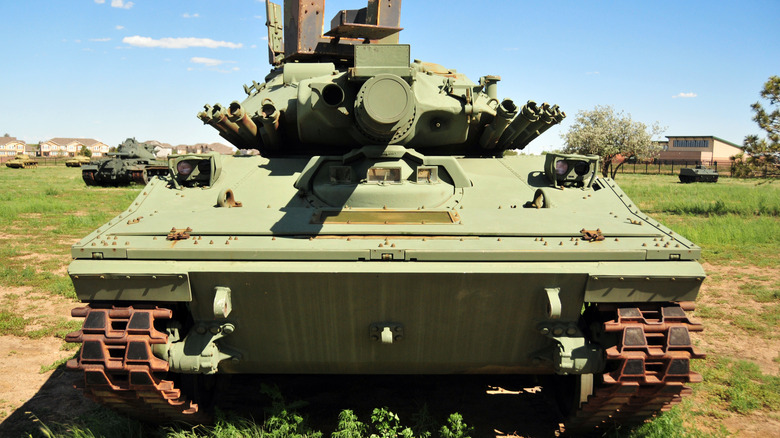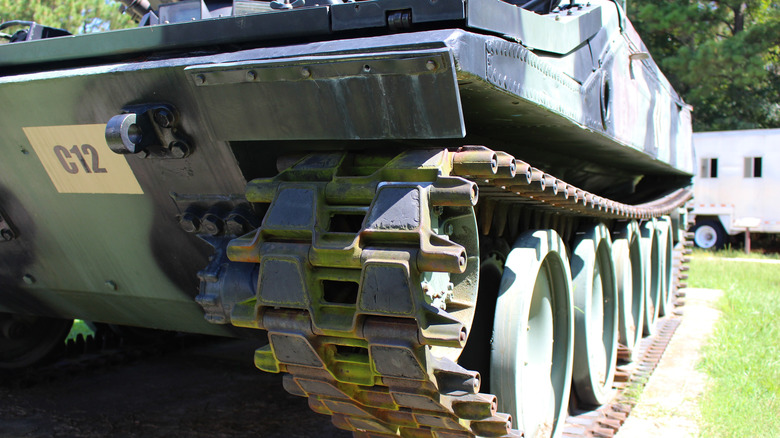Why The M551 Sheridan One Of The Most Polarizing Tanks The U.S. Ever Made
If you've ever delved into the curious world of Amazon user reviews, you'll know just how much opinions can differ on the very same thing. It's extraordinary and can apply to anything, from same-day-delivery toothbrushes to a certain tank fielded by the United States.
Some models to come out of the country, like the ever-enduring M1 Abrams, have achieved an iconic status. Reliability, weapon potency, and defensive capability are some of the traits that define a great tank, but it's not as simple as that. Light tanks, after all, aren't designed around defense, but greater mobility than their sturdier yet comparatively more sluggish counterparts.
It seemed to prove particularly difficult to define the role of a light tank and to field a consistently excellent one. The U.S. Army's final light tank was the M551 Sheridan, a truly unique weapon. Though it certainly wasn't without its great strengths, it also had shortcomings in some key areas. Let's take a look at the best and worst of the Sheridan, and exactly why it's so polarizing.
The development and strengths of the M551 Sheridan
The Sheridan took shape in the late 1950s. February 1957 saw the beginning of an ambitious project, the next step in U.S. tank creation, with the work of the Ad Hoc Group on Armament for Future Tanks or Similar Combat Vehicles. The Army Historical Foundation reports that one objective of this work was to develop an "armored reconnaissance/airborne assault vehicle."
From this designation alone, it seems clear that such a vehicle was to be designed with three priorities in mind: agility and relative speedy, versatility enough to be dispensed where it's needed, and boasting sufficient offenses of its own. It's difficult to deny that the Sheridan, which topped out at a respectable 43 mph, had all these qualities.
Utilizing a main body fashioned from aluminum, General Motors was able to keep the tank's weight down to approximately 15 tons. As befits the light tank designation, this made the machine so (relatively) light that it was possible for the military to air-drop it into theaters where it was needed.
The Sheridan combined these traits with an XM81, a unique weapon system that could fire a range of devastating ammo. The likes of the Shillelagh missile and M409 HEAT missiles ensured it was a huge threat to tanks in much larger packages and opposing infantry alike. On paper, in particular, it was a sophisticated and impressive American tank, but it also had some major shortcomings that tarnished its reputation.
The disadvantages and ultimate fate of the M551 Sheridan
A 15-ton tank parachuting down from the skies and crossing water-based hazards would certainly have been a sight to behold. Sadly, such extraordinary abilities were rather limited in practice. There was a screen that could be extended, which meant the Sheridan could cross water, but it could only do that around 3 mph, making it particularly vulnerable in the process. Depending on the terrain, then, it was robbed of its main functionality, and it was difficult to compensate for this.
Its undoubtedly potent weapon system, meanwhile, wasn't tested extensively enough, and ultimately wasn't well-suited to the vehicle. The Sheridan's turret boasted a sturdy steel construction, but the lightweight frame struggled to handle the heft of the XM81. Its heavy recoil was not mitigated by the body, and it was prone to barrel damage.
During the Vietnam War, around 200 Sheridans were fielded, and more of its disadvantages became clear during that particular conflict. The nuclear, biological, and chemical protection across its body was effective only against up to 14mm shots, and though a little more defensive from the front, it was easily devastated by any greater firepower or dangers like mines.
Overall rather more effective in theory than practice, the Sheridan stopped being manufactured after 1970. An improved version with sophisticated targeting mechanics, the M551A1, was created in 1990, but main battle tanks, along with the likes of the reconnaissance-based M3 Bradleys, made the Sheridan family largely redundant.


